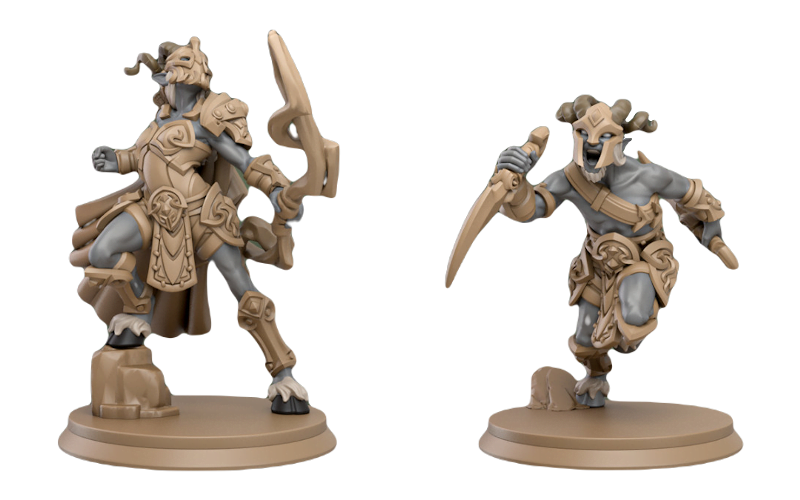Bill Of Elf, Part 2
Yesterday I talked about the world building I have explaining the basic foundation of elves in the setting, and in the process, described a set of different ‘elves’ that players have access to for building their own characters. But that was more a sort of top-down cladistic vision of them. What are those elves like, what does it mean to be a member of those elven cultures? How do they view one another and what kind of characters do they allow?
Continue Reading →Bill Of Elf, Part 1
I’ve written about elves in Cobrin’Seil, but it was writing that was largely about addressing them as an origin. What I wanted to address is the question of why elves can make half-elves, when they’re not quite like half-orcs. I even established there that elves are less a heritage and more a group of heritages, all drawing from the same singular space.
Of course, the language around this is complicated. After all, I call these things elves, but one of those types of elf is called elves. And I’m not doing this in the vein of Moon Elves and Sun Elves and Sand Elves and Dust Elves and Song Elves and Wood Elves and Winged Elves and I only had to make up one of those. But the general fantasy of ‘elf’ is something players love, but also it means a lot of different things. The distribution of ‘elves’ is a whole question unto itself, and I kind of needed to decide what I wanted them to do and what character fantasies are enabled.
Plus, that creates a question of how the world relates to the idea of the Elves, and well…
That’s a world building question.
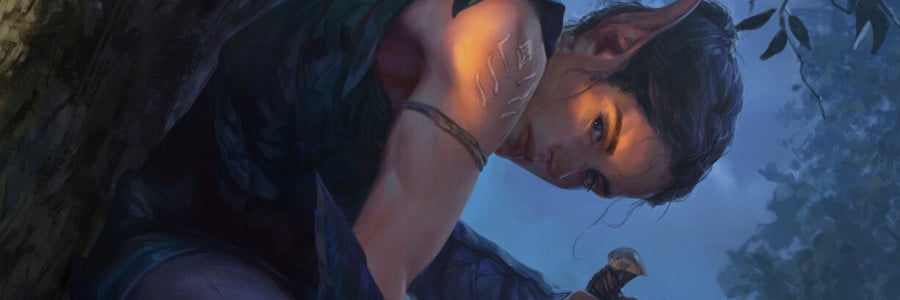
Legal Systems in Cobrin’Seil
Let’s talk about the complicated way people in a D&D setting find justice.
Understand that a body of this thinking is a byproduct of watching this Burgerkreig video. I’m summarising some points and his overall structure, and I’m trying very hard to not just copy his metaphors and jokes. This kicked me into realising that I had, in fact, actually done this for part of my setting, which meant I had something useful, a default.
Having the Eresh Protectorate as a central setting component is very handy, because they help to standardise things across the entire vast continent of Bidestra. Not that they impose a singular standard per se, but because when there’s one cultural marker spread across a region, other cultures can point to it and say ‘we do it that way’ or ‘we don’t do it that way.’
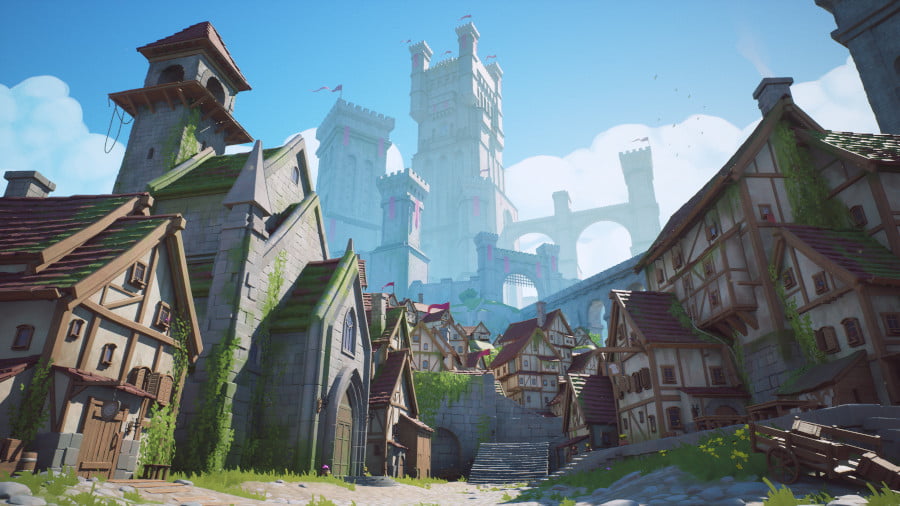
What I like about it in this case specifically is that when we look at the legal system of the Eresh Protectorates, it is ridiculous and full of uneven, inadequately distributed systems for stupid reasons. But those reasons are all to some extent realistic and create points of tension for when I run the game, and give players a meaningful relationship to the systems in the world.
Continue Reading →Nations, States and Countries in Cobrin’Seil
To build a country is hard.
I’m not just referring to making maps, where I’m garbage. I have been writing Cobrin’Seil as a setting for twenty years and I have drawn three maps. There are some of y’all gifted with an ability to craft a visual representation of all the different things you could want to visit. Me, I get in a weird space where I worry if I don’t put things down on the map right, when I need to come up with a location for things, my players may go ‘well it wasn’t on the map.’
Which is dumb.
Anyway, I also don’t mean the way that it’s a very challenging thing to invent countries – which is part of what I’m doing, to fill out my world. That’s going through stages, which I’m not sure about yet. Mostly it’s things like ‘would this be a cool place?’ based on a picture, then struggle to come up with names.
What I’m thinking about right now is how, in universe, it must be challenging for countries to even get to exist.
Continue Reading →Bad Maps And The Vast Forests of Corrindale
North of Dal Raeda, the first landmark most obviously seen is the vast, sprawling city of Eresh, the centre and capital of the Eresh Protectorates. The heart of the highway system that crisscrosses the continent of Bidestra, it serves as a gateway towards the dragon ruins of Amenti in the west and the dread realms of mist to the east. No highway leads directly north though –
For north of Eresh lies the forest of Corrindale.
The vast, spreading, deep and uncharted woods of Corrindale, reaching far enough north to encircle ancient mountain cities, to taste the snowy skies and paying host to its own mysterious community of druids and kobolds, host to cities of Orc and Elf and uh
and uh
stuff.
There’s lots of stuff in that there Corrindale forest. And it’s uh
It’s real big.
Right like just the top part of that map?
Yeah it’s all Corrindale Forest.
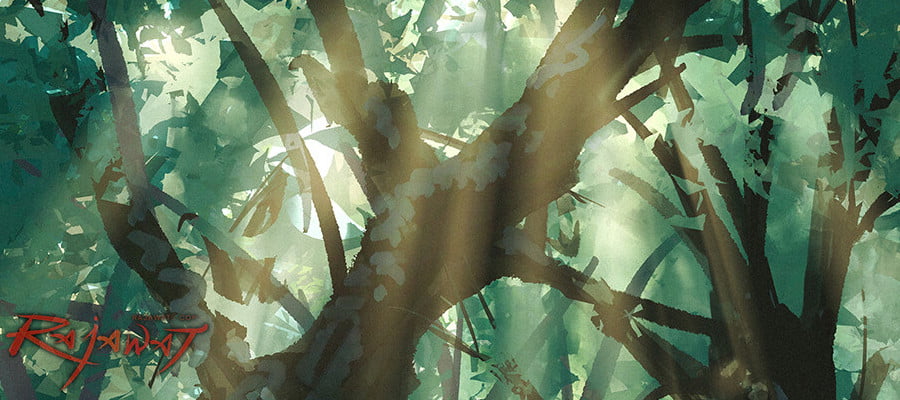
Buried Gods: Reconcepting Dragonborn
I have spoken already about the challenge of integrating the Dragonborn and Dwarves into the setting of Cobrin’Seil. These two extremely strong, heavily supported character heritages, so I don’t want to take them away from players, but they’re also hard to integrate into the world the way I want it to be. For dwarves, the problem is that they didn’t bring anything to the world that humans didn’t, and I solved that problem by reconcepting them as what I’ve called a ‘pocket heritage’ – small communities whose biological oddness is explained by a feywild origin.
Dragonborn’s problem is a little more tricky. They provide some things I do want (mechanically robust heritage that can be used for a variety of classes in interesting and distinct ways) and some things I don’t care about (fuckable dragon people). They also bring with it some worldbuilding questions, which the default setting answers with a shrug of ‘a God Did It,’ and what’s more that god is Bahamut, against whom I will never not have a grudge. I know these days he’s changed his names and now he’s a monk, no, really, he was always a cool guy, but Bahamut is still always going to be a Lawful Good God who’s meant to be Super Powerful but Doesn’t Fix Things because That Would Be Hard.
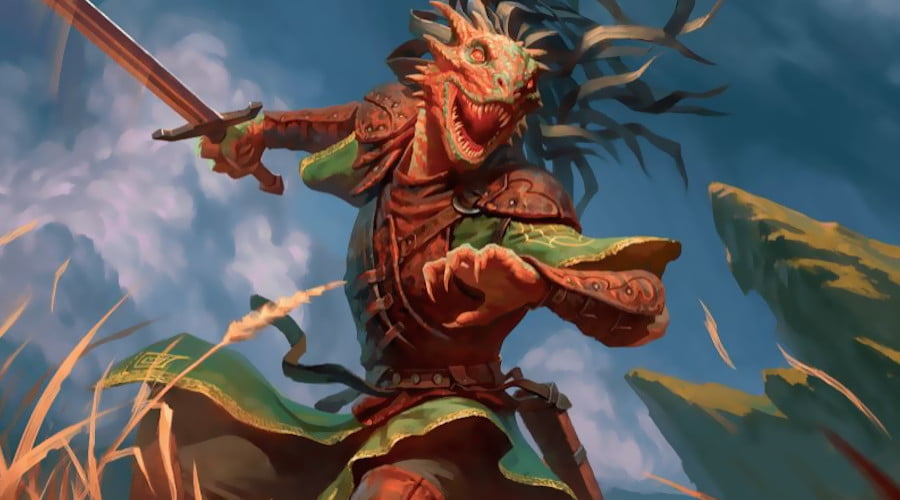
He’s also very much defined by his Faerunian depiction, and that world’s gods are awful.
Dragonborn can’t just be transplanted wholesale into another species group, or remade as like, bear people, because their mechanics have all been very good about reinforcing the flavour of being ‘a dragon that’s like, a guy.’ That means they have wings, breath weapons, bites, specific references to elemental energies through their scales, and relationships to other species based on ‘being a dragon.’ Whatever I choose for the dragonborn still has to be possible for any given player to grab their existing dragonborn character art and, more or less, plonk it into the world without feeling like they can’t ‘be’ the way they want to be in the world.
Also, there’s an added problem: Kobolds. Kobolds are an extant heritage in Cobrin’Seil, and they’re popular, and they’re useful for showing something about dragons and the world as it is. I like Kobolds a lot, and when looking at the world as a whole I had to answer the question: Why Aren’t Dragonborn Just Big Kobolds?
That was a thought, for a while there. I did seriously consider Dragonborn as like, Kobolds who had been selected to be defenders or guardians and were changed somehow, but that process seemed something I didn’t want in the world as something common enough entire heritages got it. Plus, it did open a balance door, of like, well, why can’t dragonborn and kobolds share feats? That seems strange, and lords I didn’t want to give dragonborns more options.
Here then are the parameters for defining the Dragonborn of Cobrin’Seil:
- Allow players to feel like existing Dragonborn work,
- Open up to more options that are more appropriate to the world
- Don’t make Bahamut a requirement
- Have a new, clear hook as to why a player might want to play one
- Not Just Big Kobolds
Let me tell you about an empire of the sun.
Let me tell you about the children of the scale.
Let me tell you about the Dragonborn of Cobrin’Seil.
Continue Reading →Too Much Fun: Reconcepting Dwarves
I wrote earlier this year about how I don’t like the ‘dwarf’ as conventionally presented by 4e D&D. I don’t like the implication it has in the world, I don’t like the space for human culture it eats, I don’t like the baggage from Tolkein and World of Warcraft and I really don’t like the way dwarves are so bloody good if what you want is the mechanical portfolio to build a tough hard to move character in 4th edition D&D.
The Dio Baragh, Baragh for short, are the Cobrin’Seil replacement for the Dwarf. Mechanically, they are exactly the same, but they’re not the same fortress-building, ancient-artifact-having, Jewish-stereotyping squat Scottish humanoids. Instead, the Dio Baragh (from a Scots term meaning ‘The Outcasts’) stand apart from the dwarf, on their magnificent goaty legs.
Let me tell you about a culture that was born in magic, and made itself real.
Let me tell you about people who were kicked out of the Feywild for partying too hard.
Let me tell you about people of hammer and oak and axe and thorn.
Let me tell you about the Baragh.
Continue Reading →4e: Knightly Order Themes
Obviously, writing on this blog is not really fair. Some days you get 500 words about me being sad and sometimes you get 3000 words about Violet Evergarden. These things are fungible. Typically speaking, any given blog post is ‘what I could write, on that day,’ and where it fits into the schedule.
What I want you to appreciate is that this article is absolutely beastly by these standards, and I fully expect you to not read it. I would normally have split an article this big up over several days and maybe gone in depth over it, but I know the score: I know that this is going to include a giant chunk of rules and text that people are going to skim and formatting it so it looked good took several days. What’s more, it’s about a game system you don’t necessarily even play. Giving you four days of The Knights Week (even though I like this stuff a lot) would be four blank days. Instead I’m giving the small number of you into this a bumper presentation, and here are my bullet point pieces of advice:
- 4e Themes are right now are either very weak or very boring
- These themes are made to enable different kinds of characters in the same organisation
- Make your designs bold and minimise piles of clauses
- Make them so they encourage players to make situations where those abilities are useful happens
I’ve talked in the past about the four Church Knights of the Eresh Protectorates in Cobrin’Seil, which are really knightly orders connected to one set of city-states with a shared cultural ideology, and their related religious orders. They’re tied together by highways, and those highways allow the flow of a language and a trade and that’s how the continent of Bidestra even has a language of ‘common’ – it’s the language of traders on the Highway.
These knightly orders are organisations players can belong to. They also are not singular in their purpose; as with most military-social infrastructure, they do a lot of things. Lethenites might be bookish knights on horseback serving as a sort of hospitaler, but they might also just be combat-capable battle librarians roaming around trying to find a book to SCP-style contain. I want players to have options when they try to integrate into the world.
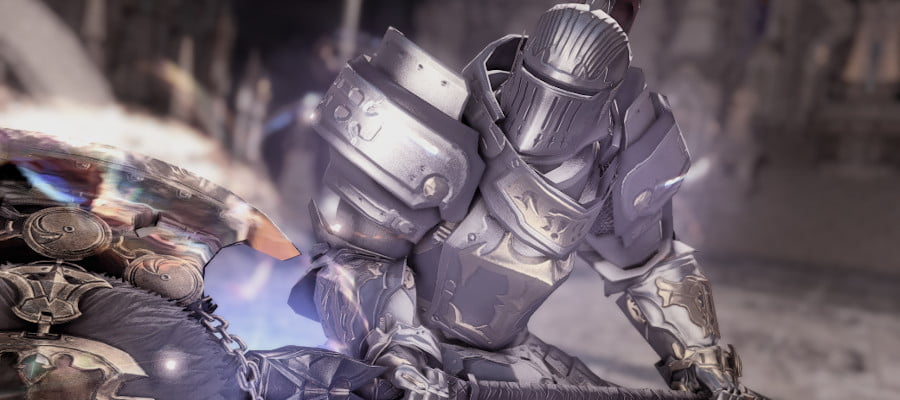
When presenting players with a player option, it’s important to make it so that theme increases options, rather than decreases them. If you present a mechanical choice that’s too good, you’ve made every alternative bad; if you present a choice that’s too weak, you’ve made it so you might as well never have presented it.
When I made the knightly orders, then, I didn’t want to tie them to a particular class, but I did want them to represent a decently large chunk of mechanical investment and improve over time. The best option I could think of here was a combination of a background (to represent just having done any work with them) and a theme. There’s a long-form article on the problems in themes in me somewhere, but for now: there are basically five decent themes and two really good ones.
My aim was to add themes to the game that gave player interesting heroic-tier advantages, didn’t clog the game with lots of specific conditionals, and enabled you to play ‘knightly’ characters with abilities that felt appropriate to the characters of their orders. To achieve this, I gave each of the four knightly orders two diferent themes, which were all meant to enable different kinds of characters.
Bear in mind, under this fold there is an enormous chunk (around seven thousand words) of game lore and rules text and it’s presented not as a popular blog article, but rather, as game rule information. This is also going to include some potentially challenging formatting as I learn tables. If you want to see it broken up into sections, or in a easy searchable databse, it should be going up on Square Fireballs at some point.
Continue Reading →Tales Of Love and Fire: Half-Orcs in Cobrin’Seil
Where do half-orcs come from?
Well that’s not a hard question, not really. The answer is they come from orcs, and humans. And that’s all the narrative requires for you to get a half orc. One or more orcs, one or more humans, and the whole thing sorts itself out. Orcs, and humans have worked out the systems for it and they’re largely self-regulating.
But that’s not really the question, not really. The question is where do half-orc characters come from, and subsequently, how do half-orc characters feel about the world they’re in?
Let’s talk about Half-Orcs, and about Orcs, and about Cobrin’Seil, and about the stories people tell one another about the things they don’t know.
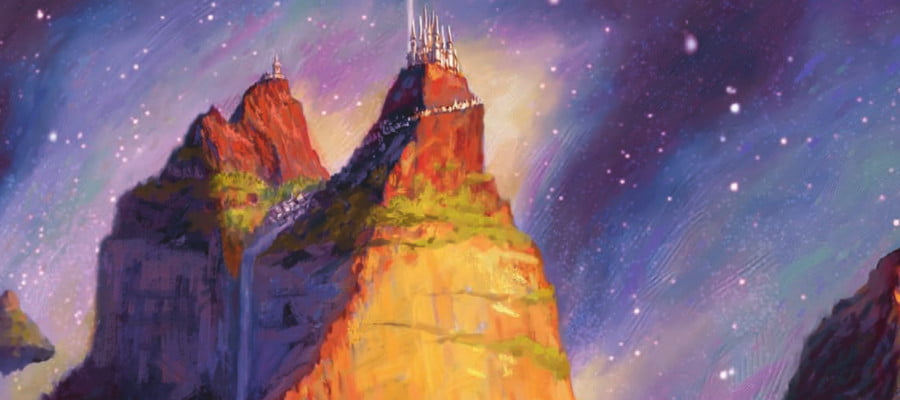
First They Must Catch Us: Reconcepting Halflings
The fire crackled, sat in the centre of the group. Four sets of boots, three large, one small, glimmered orange as the campfire’s light licked over them in pinions of orange and gold, contrasting with the deep dark of the woods, and the deep, suffusing blue of the glass-dusted sky.
“So the story goes, the story goes,” the creaky-voiced half-elf said. “Shipwrecked, they say. A crew of fifty survivors, and food enough for twenty five. They drew lots, and half the number accepted their end – casting themselves from the rocks to save the survivors the cost of them.”
“We have a story like it.” The orc said. “The strongest half went into the jungle, without any supplies, to show they were strong, and to give the weaker half the best chance to survive.”
The human pushed a stick into the fire, and shook her head. “Grim stories.”
“Stupid stories.” The fourth said. They sat forwards, their hands waving animatedly. “I don’t know about the folk of yours, but for us? We’d all find a way to do with half as much.”
“You can say that,” the half-elf started.
“Yeah. I can. And then I live it. We live it.” The Halfling gave a grim smile. “We are the ones who always survive.”
Continue Reading →Kobolds As Convergent Design
I’ve spoken about the role of the Goblin on Cobrin’Seil, but what about the kobold? I did bring up the question of hey why are these two so alike? And the followup question of where do they come from? The answer to both is ‘authors are weird,’ but I’m looking at it more in terms of how I can build and shape the world I’m putting players into, and I want the kobolds there to be both interesting enough as a player option without depriving people of the opportunity to use easy content where kobolds are happy to try and stick spears in players.
I am a fan of thinking about cultures in terms of their places in the world. That often requires answering the question ‘why are they here?’
Why then, are kobolds here?
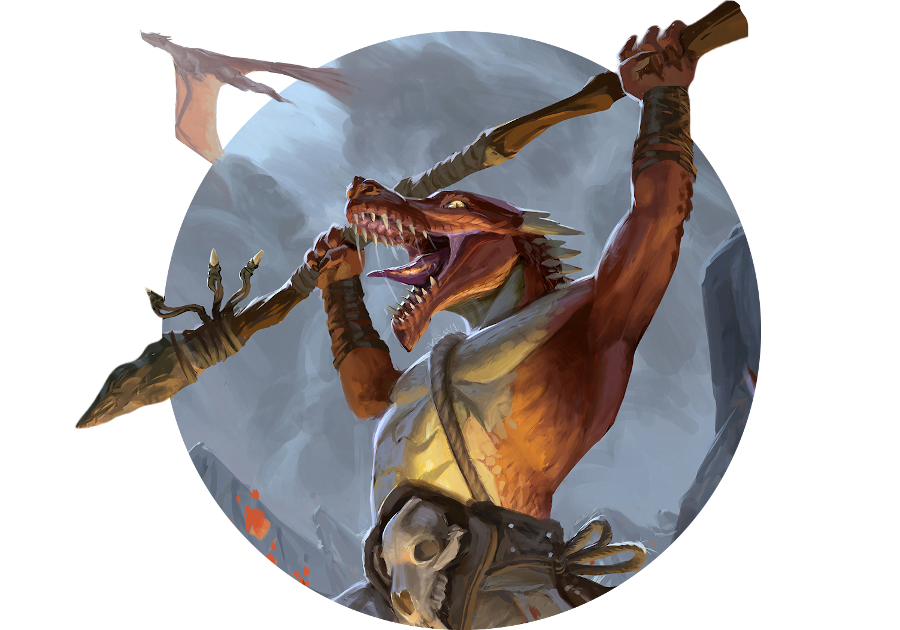
The Goblin As Fracturing Culture
I’ve spent some time considering the role of goblins and kobolds in D&D worlds, but stopped short of making decisions as they pertain to my own setting of Cobrin’Seil. It’s interesting that the idea of dispensing with both cultures was never really on the table, and I think part of that is because they do serve such a rudimentary purpose that dropping them wastes a lot of pre-existing material. It’s not like ignoring Duergar with their awful name, which drops maybe five instances of useful monster design across all editions; goblins are used in a lot of spaces and just the presence of them is a useful, handy thing for a lot of encounter designs. If you need a low-level threat, goblins are great.
What I want to do is address what they are. It’s not enough to just go ‘they’re a monster race,’ because that… doesn’t make any sense at all when you look at Cobrin’Seil and its approach to the world. I jettisoned the dwarves entirely because they don’t do anything (did I ever write about that?), so what are goblins as a culture.
Continue Reading →4E: The Hadalan
… And there, in the deepest and darkest of spaces, far from the prying eyes of those who would judge their work, or steal their designs, a god whose name is lost, did render the form of what it had seen, and sought to make its own.
It made what it thought it saw, when it saw humans.
And when it saw what it had done, it was revolted, and fled.
The Hadalan are a rare culture from the deep oceans of Cobrin’Seil. There are people of the seas – not like the cultures of merfolk and triton, that live up near the continents, building cities at the edges of the shelf where the land falls away into dark ocean. The Hadalan are from deep in the ocean; from places where vents in the earth belch bubbles and plumes of smoke into an uncaring darkness, where great bugs sift the sands, and where the dead bones of ship and whale alike lay in the muck, too cold and dark and barren to rot.
There are stories of the Hadalan. It’s said they are people who do not have souls. When seen from a distance, their shapes are hazy and indistinct, sailors say; they change shape and morph into strange and inhuman forms. Some say they eat souls, feasting on life to life to extend their own.
And there are the stories they tell of themselves.
The Hadalan, when asked, tell stories about how they were created without souls. About how they were abandoned by a god, who was horrifed at having made them. About the way they refused to die, and made their home in the deep oceans, with the deeper secrets. About glowing libraries and columns of fire that burn in the darkness of nowhere. About how they built a civilisation; how they learned to create their own souls; how they learned the ways to call upon gods.
How they called for their god, grown, whole, and a culture to be proud of.
How their god came to them.
And they tore them apart.
Continue Reading →Game Brief: The Many Complications of Fogge’s Barrow
I’m running a D&D game right now. Uh, unless something’s gone very wrong, I’ve been running it for some time by the time this guide goes up. But when I make a game I start out by giving people a document, called a Game Brief, that gives them guidance on building characters, and what’s expected of them.
For this game, I knew I had a small party (only three players), because we’d be playing this when our fourth friend was absent from the game. I also knew I didn’t want a huge stake, and wanted it to be much more about something local without big potential impact, so I put it in the mid levels of Heroic. Enough room that players could play experienced characters, but not that they had a veritable tale to them yet.
I’m going to present the brief, as I started on it… and then talk about the complication that followed.
Continue Reading →Kobolds and Goblins
Why do we have both?
Content Warning: Mentions of genocide.

Gods of Cobrin’Seil: Faces Of War
I spoke earlier in the year about ways to view gods in Cobrin’Seil, and the story mechanisms I used to consider them. I said, at the time, that I wasn’t planning on talking more about the gods in my setting, unless there was interest. Then there was interest.
This involved digging up the text I had on these gods – the historical information for comparison. Obviously, looking back on your old writing is going to come with some problems. In this case, some of it just basic assumptions, some if it is awkward phrasing, some of it is indelicate language, and uh,
also,
I cut a title from this text for Adeblen. The original title was unremarkably edgy, and I would normally leave it in, but it uses a Content Warningy word, and there’s nothing really, like… related to it. I would normally leave the text as is and use it as a teaching moment? But like: Don’t give characters titles that include words you’re not comfortable saying at the gaming table any more. Seems pretty easy teaching.
Now, with that, here’s the old text presented for the gods Palescai and Adeblen. This text is presented as is and I’ll workshop it on the other end.
Continue Reading →Making Gods in Cobrin`Seil
I have my own D&D setting; I’ve talked about it before, not because it necessarily is a thing you should want to play in, or I’m going to make you pay for, but because the process of building a world is itself full of interesting insights. Particularly, I find that the surest way to know what you like in world building is to look at other world building and see what about it makes you mad.
This time, I’d like to talk a little bit about Gods, in my setting. No, this isn’t going to be a specific list of those gods (though, you know, maybe). It’s about what gods are and what they mean.
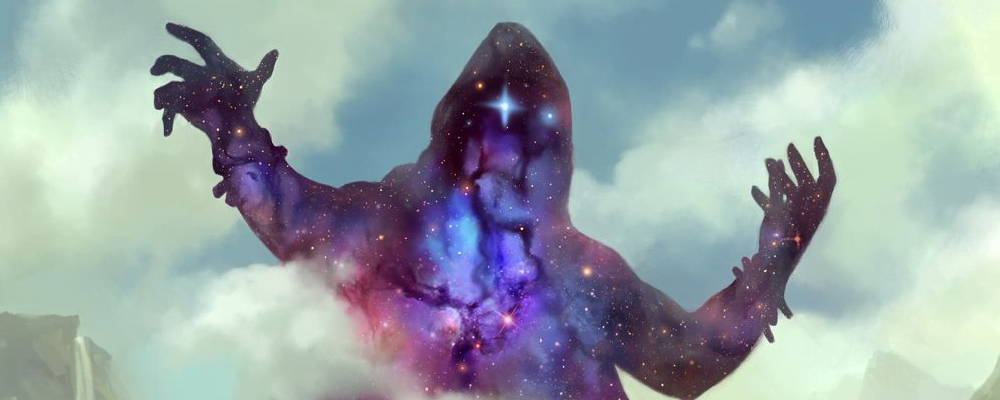
4e: The Dragonborn
You may remember a while ago I talked about how, typically, in fantasy stories, dragons are used to represent governments. This idea isn’t like, hard codified facts or anything, it’s just a way to look at dragons and it can make some sense of how they behave when they’re used in stories. The thing is, that’s a sort of high-up view of what dragons are used for, and the ways we treat dragons because it’s the way we learned to treat dragons; they are, essentially, governments that you can interact with on an individual, personal level, which means that they can be petty and cruel and vain in ways that only involve changing one mind to fix or they can be benevolent and kind in the ways that an individual making reasonable judgments can.
But what if dragons were not only expressed in these forms, what if the role of the dragon in a story being a person means it is something that people can observe, can admire, can disconnect from its duties and the scope of its powers, and consider as a person that can be swayed, can be hungry, can have material needs, can-
Look, I’m circling around the question of whether or not Dragons Doink.
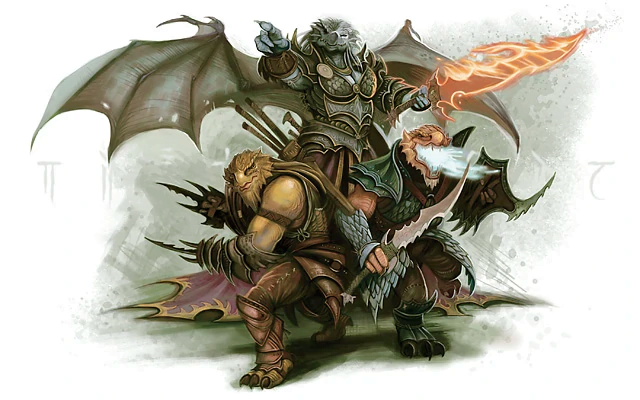
The Church Knights of the Eresh Protectorates
Once again I’m returning to run games in my Cobrin’Seil D&D setting. It’s just a setting, there’s no high romance to it, I don’t have an elevator pitch to it that’ll let you go ‘oh yeah, dang, I want to be here.’ It’s just a place with a bunch of stuff I like in it, monsters for friends to fight, Trade Cartels to attack, bandits to retaliate against, at least one or two churches to have corrupt villains come out of, all that stuff.
In this setting, though, there are Church Knights, and I’ve found more than anything else in a tabletop game book, I get excited about factions. Factions are something that you can belong to, an organisation with a perspective and an idea to them, and it can come with competing needs and ways to shape yourself in response to an identity.
So I’m going to share a bit of my setting. I’m going to share with you the Church Knights of the Eresh Protectorates.
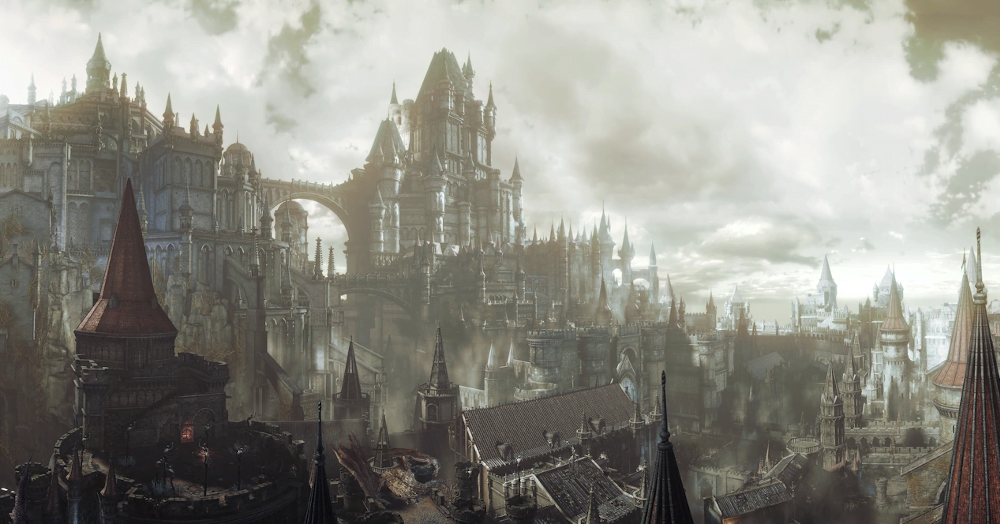
Half-Elves (But really Elves)
My earlier treatment of Orcs in Cobrin’Seil was intended, at first, to be a comprehensive examination of the half races. Elves and orcs and humans, the big three that show up in most of the editions of D&D’s player handbooks and most of the settings for them. As I did this though I realised that for all they may work just fine as different versions of the same thing for your setting, I don’t like them feeling so similar and especially not when I laid out my idea that Orcs are made of meat.
One of the questions this examination needs to answer is why are there half elves and half orcs? Perhaps a permutation would be why them and not half-other things? Some settings even answer that with things like the Mul, or half-centaurs or half-catfolk or so on. In that case, the halfness comes from a fundamental trait of humanity. I can buy that? Some people like it when humans’ ultimate flexibility includes with whom they can breed. It certainly fits the human cultural tendency to fuck things.
Continue Reading →Rebuilding Cobrin’Seil Part 4: The Everywhere Else
Back in 3rd edition, I created my own D&D setting. It wasn’t very good, but I’m still very attached to it, and want to use it as an object lesson in improving. I also want to show people that everything comes from somewhere, and your old work can help become foundational to your new work.
Content Warning: Some of the old text is going to feature some unconscious cissexism and sexism, and I know there are a few unknowingly racist terms that I used.
Alright, so previous bandaids were about my decisions that were thoughtless and badly thought out, like ‘Kyngdom’ as a name, or barely scrubbing the name of Cimmura. The thing is, Dal Raeda, the Eresh Protectorate, and Amenti represent what are some of the best designed pieces of the setting, the places where I had good, fundamentally usable ideas.
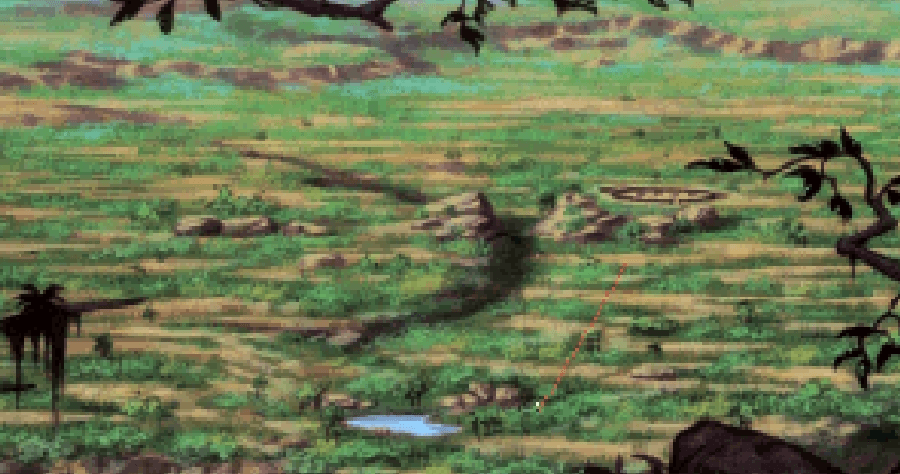
The rest of things is where it all gets a bit soft, and also where I did some things that are uncomfortable, and now with the benefit of experience, I realise are pretty damn racist.
You might have notice that I’ve avoided showing any maps of this world, because it’s all in flux now.
Continue Reading →Rebuilding Cobrin’Seil Part 3: Framing Spaces
Back in 3rd edition, I created my own D&D setting. It wasn’t very good, but I’m still very attached to it, and want to use it as an object lesson in improving. I also want to show people that everything comes from somewhere, and your old work can help become foundational to your new work.
Content Warning: Some of the old text is going to feature some unconscious cissexism and sexism, and I know there are a few unknowingly racist terms that I used.
The standard D&D place write-up is bad.
When I first wrote this setting, I did it by emulating the existing 3.0 and 3.5 D&D sourcebooks’ ways of representing countries. It’s a good practice, certainly as far as making sure that as a developer I was making games to a professional template, but it meant that things that template did that I don’t like, I was doing anyway.
Continue Reading →Rebuilding Cobrin’Seil Part 2: Knightly Orders
Back in 3rd edition, I created my own D&D setting. It wasn’t very good, but I’m still very attached to it, and want to use it as an object lesson in improving. I also want to show people that everything comes from somewhere, and your old work can help become foundational to your new work.
Content Warning: Some of the old text is going to feature some unconscious cissexism and sexism, and I know there are a few unknowingly racist terms that I used.
I mentioned last time that I like giving players handles. In the country now known as Dal Raeda, this took the form of different provinces, with different cultures, but since a game set in Dal Raeda meant I’d be dealing with the lead-in to a potential civil war or players subverting or delaying that civil war (and that seems a big setting piece to deal with in my first game or two), I immediately relocated my focus to the nation next door.
Continue Reading →Rebuilding Cobrin’Seil Part 1: Names in the Kingdom
Back in 3rd edition, I created my own D&D setting. It wasn’t very good, but I’m still very attached to it, and want to use it as an object lesson in improving. I also want to show people that everything comes from somewhere, and your old work can help become foundational to your new work.
Content Warning: Some of the old text is going to feature some unconscious cissexism and sexism, and I know there are a few unknowingly racist terms that I used.
First of all, let’s talk about just some basic work of names.
One thing I feel gives players a good handle on things is giving them groups and places to feel they can ‘belong’ to. These are player anchors, and players love those. It’s why class-race characterisation has lasted so long and so well, and why people use it when describing games that don’t have classes or races. Handles are great, and they’re part of how we tell stories and anyone who tells you they work against good storytelling is unimaginative, fight me.
Continue Reading →Rebuilding Cobrin’Seil
When I was nineteen, I started running Dungeons and Dragons. The history of my time with this game isn’t important, but what is important is that when I started, I had access to the setting books of the Forgotten Realms and Greyhawk settings, and seeing this veritable library of game rules and information about mechanical identity and culture, I immediately said No, I don’t want that.
I wanted to tell stories with this game, but there were two reasons I wanted to avoid an established setting:
- I was brand new to the game, and didn’t want people to feel they could ‘beat me’ about the world by bringing up a book
- I didn’t want to have to read a dozen books to get started
Instead, I invented a world in a weekend and then spent years bolting on new things, editing, re-editing, retconning and then, around the time 4th Edition became a thing, I quietly put the world away and worked on other stuff. I still ran the occasional D&D game in this world, but the world wasn’t important to the games.
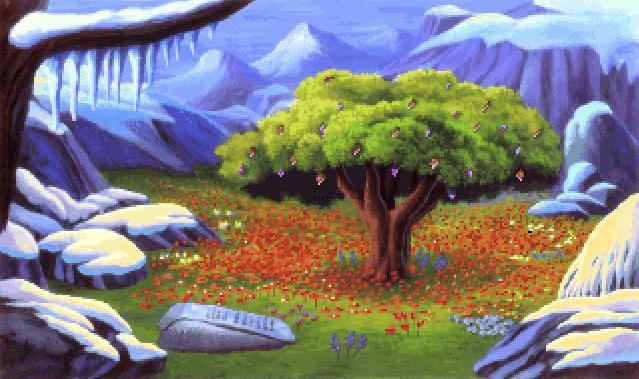
This is a huge trove of lore and game mechanical information. I made classes and races and feats and just a ton of stuff, some of which I recently dusted off and looked at, and you know, some of it was bad, but some of it surprised me. Particularly, a thing that surprised me was how many of the basic ideas in it I liked, and wanted another chance to do better.
Plus, I know there’s an interest in worldbuilding as a skill, and I’m friends with some people who are really good at it, and they’ve had some really interesting stuff to say about it. But I don’t just want to make good things and show you the final product; instead, I want you to see that every good thing you like was worked on and refined and changed, and for that reason I figured I’d put down these setting revision notes here, in a series.
This is going to introduce you to the setting, both how I’d explain it to a player, and how I’d put it into a book. I’m going to examine my ideas, and then examine how I think players might engage with them as play spaces.
Going back over old writing is going to reveal some ugly stuff, and some really basic stuff. I imagine there’s going to be some implicit racism and cissexism, some unconscious misogyny and I know at least once I use a slur as a game term, which isn’t good. A content warning then, going forward.
The image is from the VGA Remake of Quest For Glory I, a game that heavily influenced the creation of this setting, even if I let almost none of the Cole’s taste for Whacky Humour infiltrate my game.

